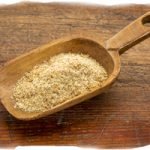For the last issue of the year, let’s turn to the headlines to look at some of the issues that have appeared in just the last few days.
The FDA Says No to Raw Milk
Excerpts from a 12/16 FDA announcement.
“Following an outbreak in the state of Washington, the Food and Drug Administration (FDA) is warning the public against drinking raw milk because it may contain harmful bacteria that can cause life-threatening illnesses. Raw milk is not treated or pasteurized to remove disease-causing bacteria.
“To date, eight illnesses have been reported in Washington state, several of which were in children. Two of the children remain hospitalized.
“Pasteurization is the only effective method for eliminating the bacteria in raw milk and milk products. Pasteurization uses heat applied for a length of time sufficient to destroy harmful bacteria such as E. coli O157:H7 without significantly changing milk’s nutritional value. There is no meaningful difference in the nutritional value of pasteurized and unpasteurized milk. Pasteurization can also prevent such contagious diseases as tuberculosis, diphtheria, polio, Q fever, salmonellosis, strep throat, scarlet fever, and typhoid fever that can be spread by bacteria in milk. All milk shipped between states is required, by law, to be pasteurized.”
So what does it mean? Let’s deal with the issues presented by the FDA one at a time.
- Can raw milk become contaminated? Yes, absolutely — but not often. Most raw milk dairies tend to run extremely clean operations because of the liability issues. And keep in mind that in this recent outbreak only 8 illnesses were reported. We see far more E. colicontamination in meat each year than in raw dairy — even as a percentage of users. And in fact, we regularly see contamination of pasteurized dairy too, but the FDA never seems to propose that people stop eating meat and pasteurized dairy. It seems raw milk just doesn’t have a big enough lobby supporting it.
- Are there any health benefits to drinking raw milk? According to the FDA, no. And if all you measure are protein and fat content and added vitamin D, they are correct. But if you consider that pasteurization involves heating milk to approximately 145 degrees Fahrenheit for 30 minutes or longer and therefore kills all enzymes and beneficial bacteria in the process, then the answer is not so obvious. And if you toss in the fact that pasteurization makes calcium insoluble and unavailable to the body — a key reason countries with the highest pasteurized dairy consumption have the highest rates of osteoporosis in the world — and the health benefits swing decidedly in favor of raw milk.
- And while we’re at it, let’s mention homogenization which makes the fat particles so small they are sucked up by your cardiovascular system and which also unleashes xanthine oxidase (excreted if you drink non-homgenized milk) to attack your arteries.
So am I advocating drinking raw milk?
Not necessarily. I still have issues with some of the proteins in dairy that tend to trigger allergic reactions, whether that dairy is raw or pasteurized. But if you are going to drink milk, raw organic milk is a healthier option than the pasteurized, homogenized moo-cow juice you find in the supermarkets. For more info on dairy, click here.
And for that matter, organic, undenatured whey is probably the best option when it comes to dairy — but even then, there are allergy issues.
Fiber Fails the Test
Or does it?
According to a study published in the current issue of the Journal of the American Medical Association, an analysis of 13 studies of dietary fiber and the incidence of colorectal cancer at first revealed a significant beneficial relationship between dietary fiber intake and colorectal cancer risk. However, this association was effectively eliminated and no longer significant when other colorectal cancer risk factors were taken into account.
So what problems do I have with this study? As it turns out, several:.
- First, the study did not factor in the use of dietary fiber supplements on the assumption that less than 4% of people use them. On the other hand, the study took note of the fact that one of the 13 studies they analyzed showed a significant benefit from the use of psyllium seed supplements.
- Second, the study itself acknowledged potential flaws in the methodologies of the analyzed studies, including:
- Likely inaccuracies in the measuring of fiber by participants (not insignificant since it goes to the heart of the study)
- And the inability to assess the benefits of long term fiber usage
- And most important of all, what are some of these “other colorectal risk factors” that were taken into account? As it turns out, they include education, physical activity, alcohol, smoking, and red meat intake — or in a word, lifestyle. Which brings up the fundamental complaint I have with virtually all “establishment” studies of non-medical protocols: they separate the parts from the whole. In other words, the separate parts, when analyzed one-by-one, can all be proven inadequate, whereas the sum of their use together could be highly beneficial, but you would never know that from the studies. However, to determine this requires a 1800 shift in testing procedures.
You need to first test the entire protocol (in this case people living an alternative lifestyle that includes a high fiber diet) to see if the results of the entire protocol as practiced in real life are beneficial and then remove components one at a time to see which pieces affect the outcome. I covered this extensively in the Oct 10, 2005 newsletter in which I talked about the testing of cancer protocols. The bottom line is that there is a fundamental difference between holistic therapies and drugs — and that difference requires a fundamental difference in testing procedures to obtain meaningful results. Or to look at it another way, testing alternative therapies according to drug test protocols is as useful as evaluating the skills of a Prime Minister based on how well they play fullback on a soccer field.
Bird Flu
Or how not ot run around like a chicken with your head cut off
So once again, we deal with bird flu — undoubtedly, the health story of the year. When I first wrote about it last August, it was just beginning to break in the news, and at that time, I made some predictions. How well did they stand up over the last six months? I predicted that:
- Flu vaccines would unlikely prove effective in the near term. Just a couple of days ago, the results of tests were published that dashed the hopes of any rapid production of an effective bird flu vaccine
- Antivirals such as Tamiflu would prove ineffective. And on December 3rd, published reports indicated that Tamiflu had zero effect on bird flu.
- The media would eventually run wild with the story. Need I say more. It’s the story of the year — replete with an abundance of misinformation and scare mongering.
Dang, but I look good. (Actually, not such a big deal. There were many voices saying the same thing back then. Unfortunately, it just wasn’t coming from the talking heads in the media.)
And while on the subject:
- We have received several hundred emails from subscribers concerned that there is an active conspiracy to suppress the truth — that bird flu is already running rampant with human-to-human transmission proven and that thousands have already died in China and Indonesia. I have two problems with that.
- Once it breaks free on human-to-human transmission, bird flu would not stay isolated in any Asian country very long. In a matter of a few weeks, it would be everywhere. If thousands of people in China had died from human-to-human avian flu over the last year, we would know, because hundreds of thousands would already be dying from the disease in the West — but they’re not.
- The only sources of information on this suppressed epidemic are single sourced, unverified, web pages. Just remember, anyone can publish anything. Just because it’s published doesn’t make it automatically true. (Not on CNN. Not on JAMA. Not on the FDA website. Not even on <?php echo $_SERVER[‘SERVER_NAME’]; ?>– although I have to admit, I’m kind of partial to the reliability of that particular source.) Bottom line: use discrimination.
- And of course, we have also received several dozen emails telling us that we may be looking at the exact opposite conspiracy — that governments and the large pharmaceutical companies are not suppressing stories on avian flu, but are in fact manufacturing them (all puns intended) to drive up the demand for unneeded vaccines and antivirals. Ah! If only governments and the pharmaceutical companies were that effective and efficient; perhaps we wouldn’t have all the problems and lack of health we have in the world today. I don’t deny the power of greed and corruption, but I believe that the desire to cover one’s butt and the need to hide failure and incompetence are the more likely culprits when looking at large bureaucracies.
Again, when it comes to your health, don’t count on government or the medical fraternity. You need to take charge of your own well being.
And maybe that’s a good place to end the year — with a holiday wish for you and yours for good health and long life, despite the inadequacies of those who seek to regulate them for you..










